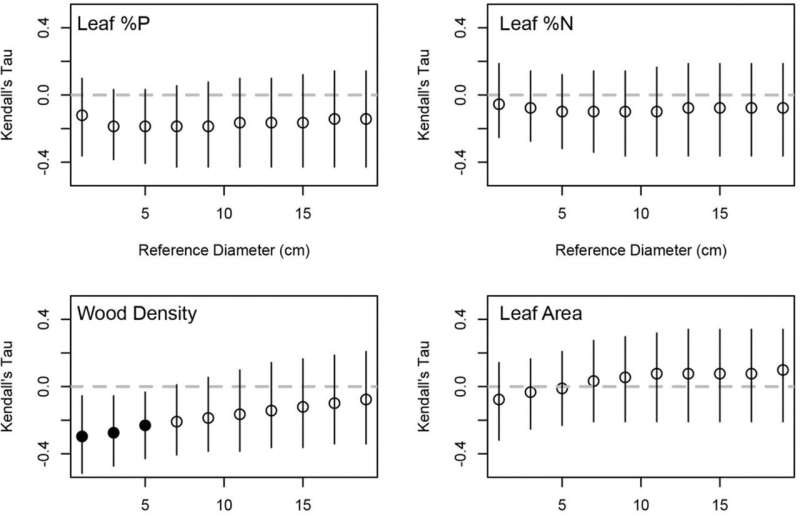Coordination exists between tree allometrics and functional traits, finds study

Plant ecologists have identified a number of functional traits that indicate where species fall along an ecological strategy spectrum from acquisitive to conservative species. Plant architecture and allometries are indicative of life-history strategies.
In a study published in Ecology and Evolution, researchers from the Xishuangbanna Tropical Botanical Garden (XTBG) of the Chinese Academy of Sciences and University of Notre Dame investigated the extent to which commonly measured functional traits predict tree architecture in a tropical forest. Specifically, they tested whether conservative functional trait values (i.e., dense wood, heavy seeds, slow leaf economics) are associated with trees that are shorter in stature and have larger crowns at a given stem diameter.
The researchers wanted to find out whether there was a relationship between tree allometries and functional traits. They focused on 14 dominant tree species in a tropical rainforest (in the El Yunque National Forest, Puerto Rico) that experiences repeated tropical storms and hurricanes, which may select for species with coordinated trait axes and allometries.
They found that there was no interspecific variation in allometric slopes, but there was inter-specific variation in intercepts. These intercepts were correlated with a leaf, stem and wood traits, with conservative values associated with species that have shorter heights and wider crowns for a given stem diameter.
Species varied in their allometric intercepts, but they did not vary in their allometric slopes for both height–trunk diameter and crown radius–trunk diameter relationships. The variation in allometric intercepts and not slopes indicated that interspecific differences in tree architecture in the forest were due to intercepts and not interspecific differences in the proportional increase in height or crown size for a given increase in trunk diameter.
Finally, the interspecific variation in allometric intercepts and overall tree architecture across sizes could be predicted by a handful of functional traits.
“The results suggest that whole plant architecture and functional traits are correlated in the trees studied and their integration should provide insights into how integrated phenotypes are related to tree life history and demography,” said Yang Jie of XTBG.
More information:
Jie Yang et al, Height and crown allometries and their relationship with functional traits: An example from a subtropical wet forest, Ecology and Evolution (2023). DOI: 10.1002/ece3.9804
Citation:
Coordination exists between tree allometrics and functional traits, finds study (2023, February 22)
retrieved 22 February 2023
from https://phys.org/news/2023-02-tree-allometrics-functional-traits.html
This document is subject to copyright. Apart from any fair dealing for the purpose of private study or research, no
part may be reproduced without the written permission. The content is provided for information purposes only.
For all the latest Science News Click Here
For the latest news and updates, follow us on Google News.

